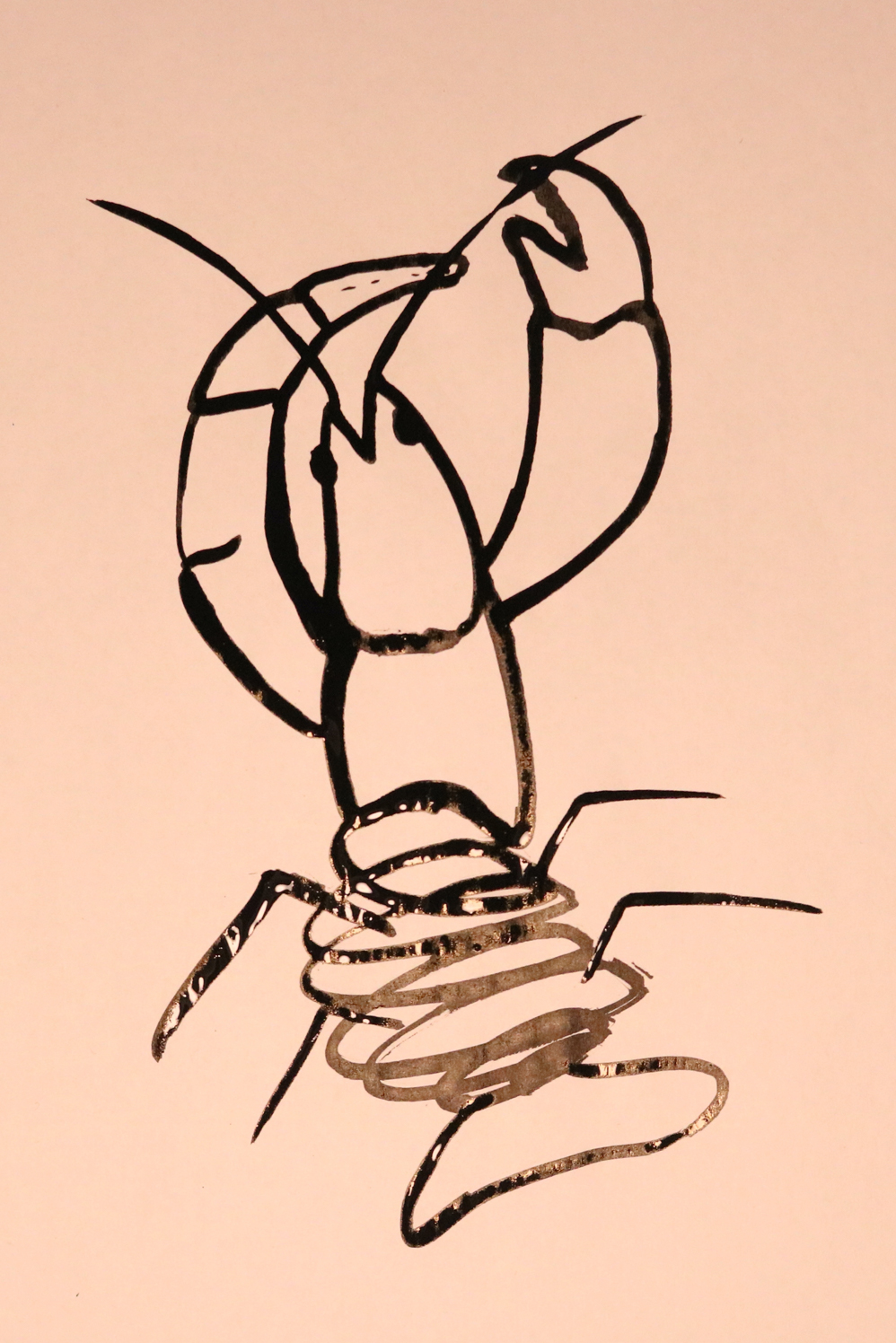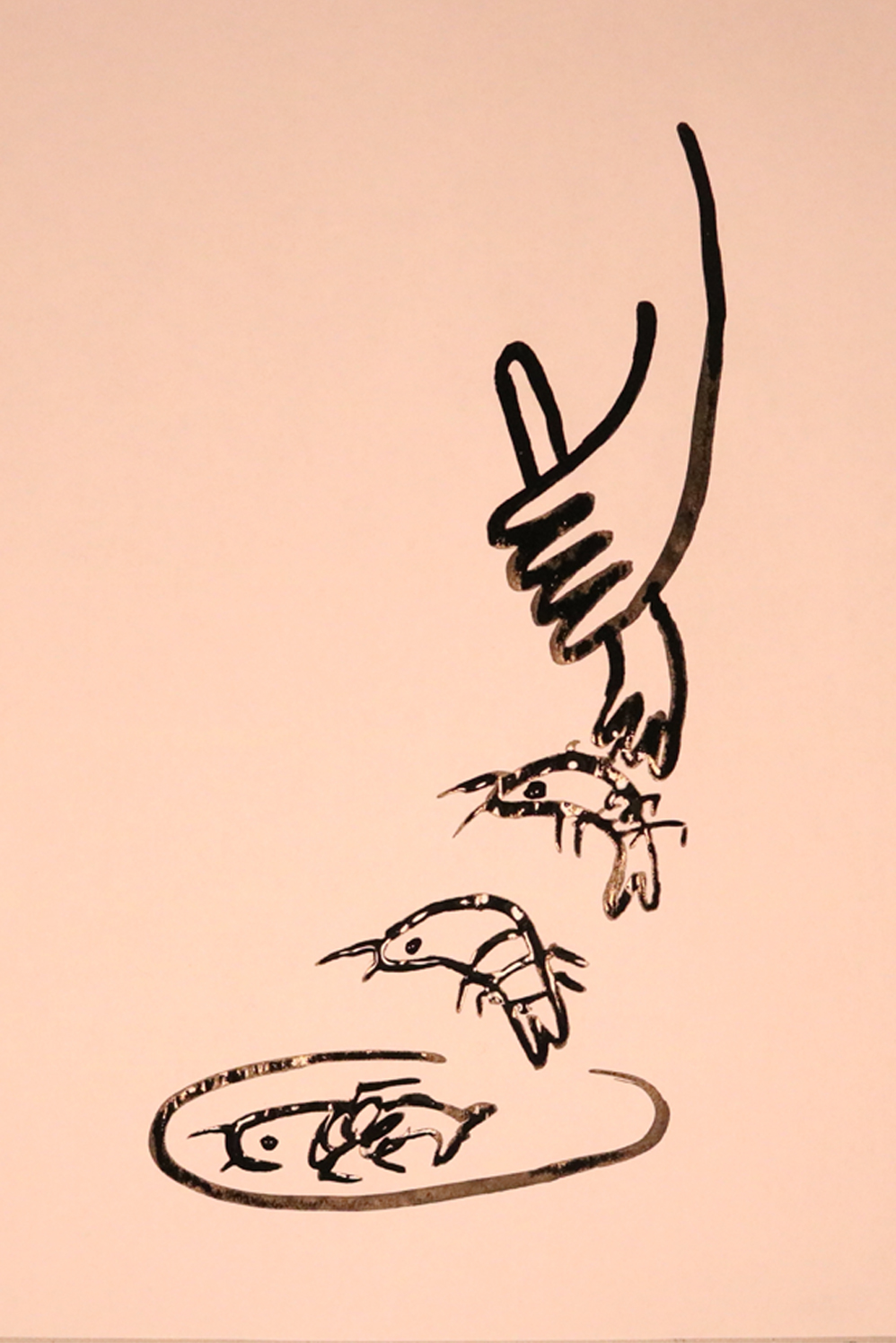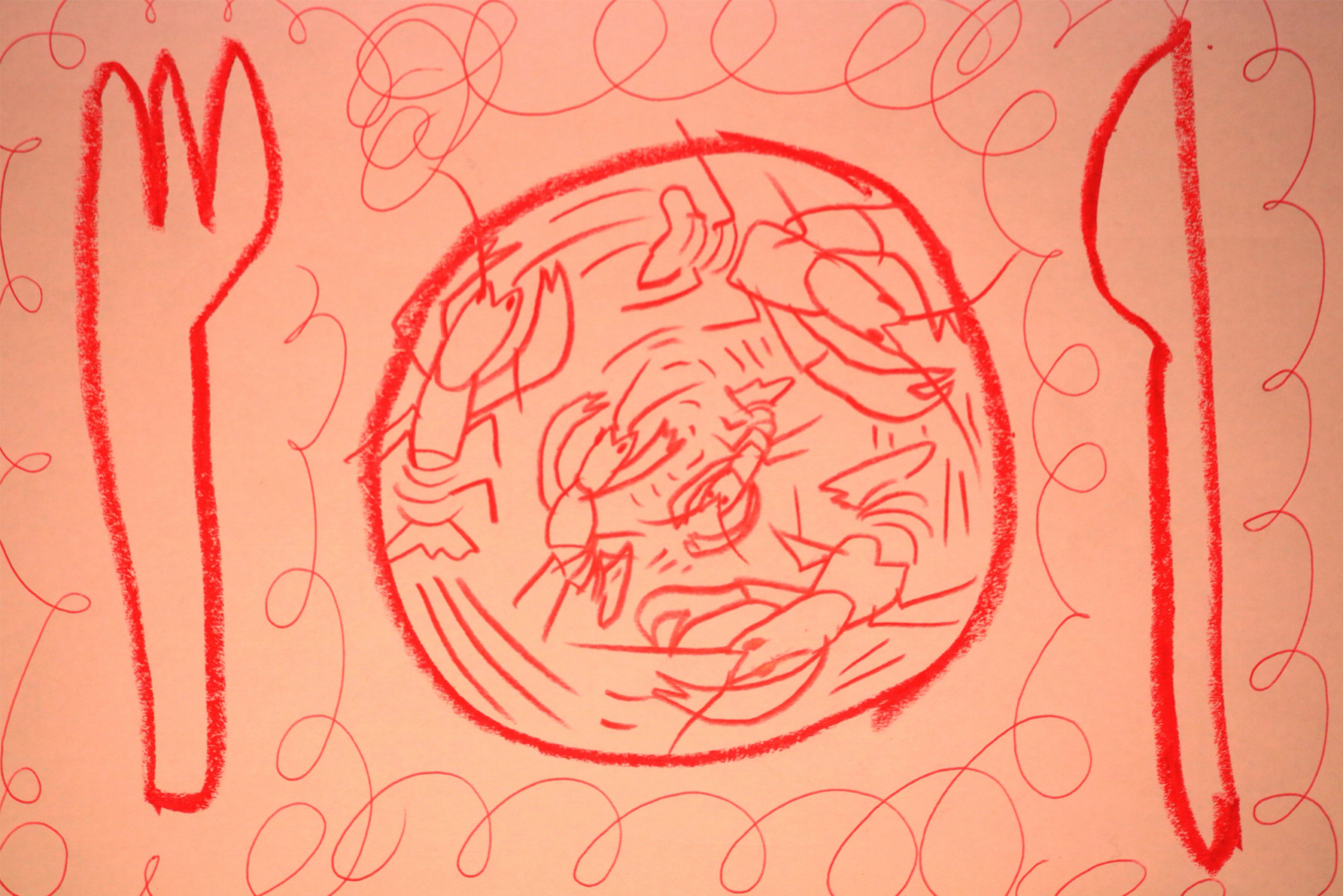The editor of Food&, Asís Ybarra walks us through Recipe for Invasive Crayfish, a recipe that encompasses tradition, environment, and food as a political concept.
From an intimate to a global setting, food is undoubtedly one of the most present factors in our daily life—it affects our bodies, mental health, and economy. In addition to a wider interest in the environmental and social impact of our food systems, the last years have witnessed a soaring interrogation of the ethics of food production and consumption. Policy-makers and agronomists, as well as artists and designers, have tackled food from the perspective of ecology, decolonization, biodiversity, and community, in a quest for alternative, more sustainable approaches to the established infrastructure.
For Berlin-based artist Asís Ybarra, food is inherently a political issue. Ybarra is the editor of Food&, a publishing project founded in 2016 with the aim of exploring unusual encounters with food. With a playful yet poetic methodology—each issue pairs food with seemingly unrelated topics such as gravity, aliens, and sports—the magazine challenges its reader’s understanding of the implications of what we eat and consume.
Asís shared with us Recipe for Invasive Crayfish, a recipe that changed the way the team of Food& thinks about the social and environmental impact of food. “ We are always interested in exploring different ways of being political with food and were inspired by artist Chang En-Man’s Invasion project shown in Dokumenta 15 in Kassel, Germany. In it, she investigates themes of colonial history and food cultures through the introduction (and invasiveness) of the Giant African Snail in Colonial Taiwan.”
This is the first episode of This Changed my Life, where we invite creatives that inspire us to talk about a book, film, artwork, or person that changed their life.


“The original version of the recipe pre-dates the invasive crayfish. Many people prepare the original version, as the autochthonous one (also thought to have been imported from Italy at some point) contains invasive crayfish which is now forbidden to fish. However, the tradition of eating crayfish seems to have traceable origins back to Felipe II in the 1500s. While researching this recipe, and going deeper into Spanish crayfish, we found a few articles published that talk about their current risk status recently due to the new invasive species while suggesting eating them. This possibility brought into our lives the idea of ‘Invasivorism’, which is about turning invasive species into meals. This action can have a significant environmental and economic impact on the world.”
“As this is a traditional Spanish recipe I had it a few times as a child and I used to enjoy it very much! I can’t remember the first time I ate it, but I can remember its flavor. The crayfish has a very particular taste, it is very intense compared to other crustaceans and I would say that it’s even stronger than sea crab. It has a touch of smokiness (although it is not smoked) which stands out over the tomato sauce taste. I haven’t had it in a while, so it’s hard for me to describe it perfectly. One thing I also remember is catching them on the riverbed one time with other children, I was shocked and fascinated at the same time about the idea of finding our own food from the wild.”
“I believe everything we do is political, from our purchasing choices to breathing and existence itself—humans are intrinsically political beings. Food is very high up the ranking of politicalness as it is a universal basic need that is highly abundant (more than enough to feed everyone) yet very unequally distributed (820.000.000 people will be hungry tonight according to the UN), takes huge amounts of space and water (50% of the Earth’s habitable land, 70% of freshwater consumption) has a huge carbon footprint (1/4 of total global greenhouse gas emissions) and is often linked with modern forms of slavery. To overcome denial, the first step is being curious and interested in (food) things. Once you know the facts you can decide to take action or not. Taking action has many forms, and although we very much respect radical actions (i.e. veganism) we strongly believe in small actions by many people (e.g. reducing meat consumption) having a significant positive impact.”
Invasive Crayfish
-
Ingredients
- 1 1 kg (invasive) crayfish
- 2 1 kg tomatoes
- 3 1 garlic clove
- 4 1 onion
- 5 2 chilies (to taste)
- 6 2 tsp. of pimentón
- 7 Olive oil
- 8 1 bay leave
- 9 1 tsp sugar
- 10 Splash of brandy
- 11 Salt and pepper
Instructions:
- Chop the garlic.
- Take a large pot and add three tablespoons of olive oil over medium heat.
- Add the sliced garlic and cook until golden brown (make sure not to burn it!). Chop the onions and add them to the pot. Leave them over low heat stirring until poached (golden and soft).
- Add the chilies, the pimentón, the splash of brandy, and the salt (if you want it spicier add the chilies earlier on).
- Crush the tomatoes and add them to the pot with a tablespoon of sugar. Cover the pot and let simmer for 30 minutes.
- Mash everything to get a nice and thick tomato sauce and add the bay leaf, and the crabs, and leave on low heat for 5 minutes.
Asís Ybarra is the editor of Food& a publishing project exploring and promoting unusual encounters with food. They have covered topics such as sports, aliens, and love. You can buy a copy of their latest issue Fast Food& Patents here.
Illustration: Jenny Wright

